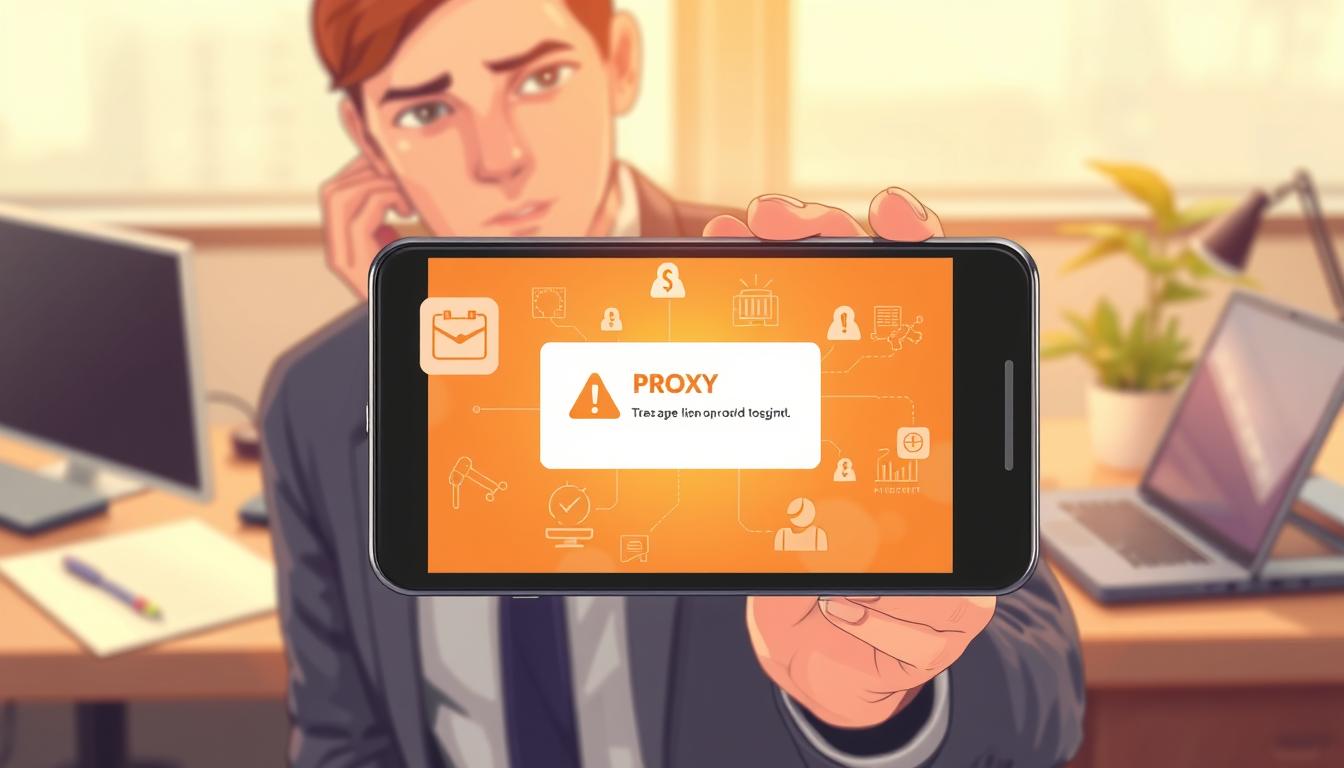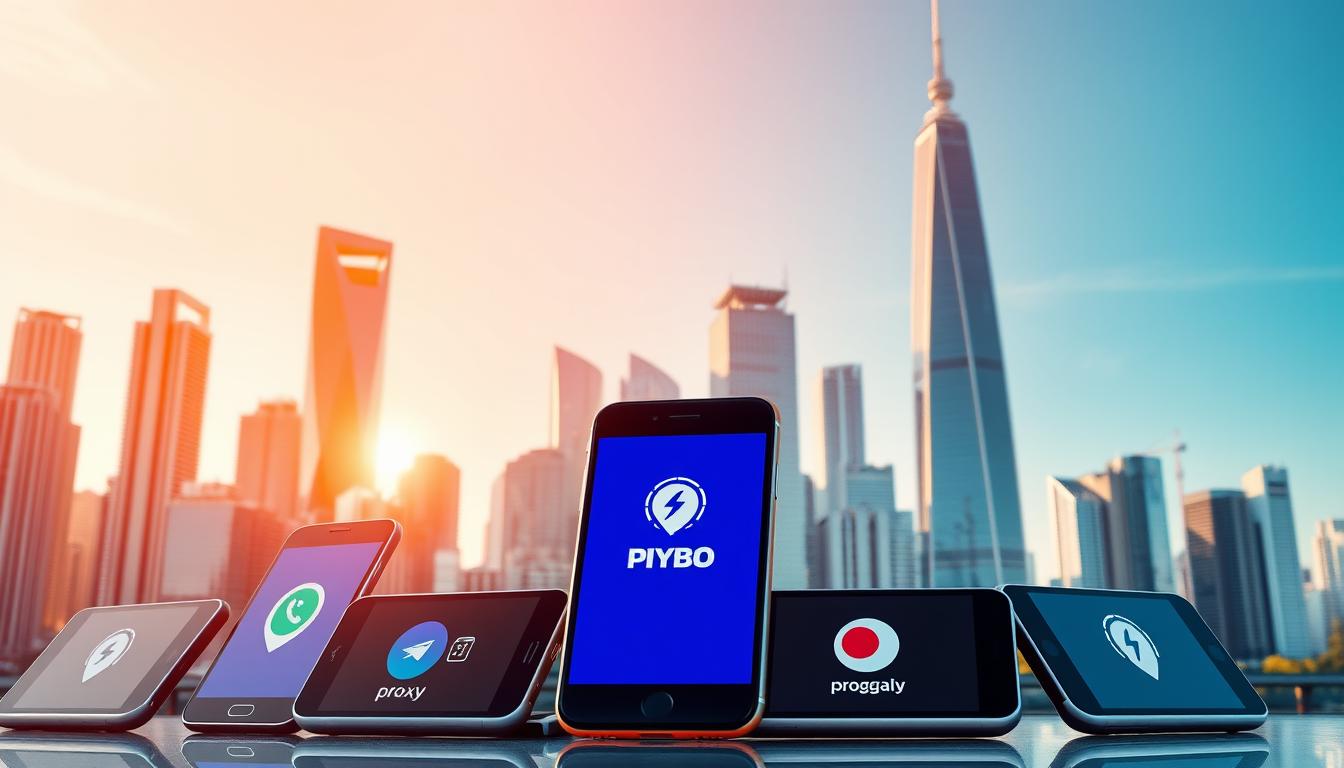FTC disclaimer: This post contains affiliate links and I will be compensated if you make a purchase after clicking on my link.
In today’s world, businesses can’t just stick to old marketing ways. Conversational marketing has changed how companies talk to people. It makes fast, personal chats that help get more leads and make customers happier. But, which conversational marketing platform is right for you? This guide will look at the best ones, showing their main features and benefits.
Key Takeaways
- Conversational marketing platforms change how businesses talk to customers. They offer personal, real-time chats through chatbots and messaging apps.
- The top platforms have many features. They include live chat, chatbots, email marketing, and form builders. These help make talking to customers easier and speed up sales.
- Any business, big or small, can use conversational marketing. There are options for every budget.
- Choosing the right platform means knowing what your business needs. You should think about your audience, goals, and features like natural language processing and support for many channels.
- Using a conversational marketing strategy well can help your business stay ahead. It ensures great customer experiences in a changing digital world.
So, what makes the best conversational marketing platform stand out? Let’s look at the top options. Find the one that fits your business goals and what your customers need.
Overview of Conversational Marketing Platforms
Conversational marketing platforms let businesses talk to customers in a friendly way. They use AI and machine learning for automated sales talks and personal service. With Conversational Marketing Platforms, companies can offer Automated Customer Engagement and Personalized Interactions. They use AI-Powered Chatbots, Live Chat Technology, and Messaging Applications.
What are Conversational Marketing Platforms?
These platforms are software that helps businesses talk to customers like friends. They use NLP and machine learning to get what customers say and answer back. This way, businesses can give Personalized Interactions and a smooth experience on many channels.
Key Features of Conversational Marketing Platforms
- Natural Language Processing (NLP) to understand and respond to customer queries
- AI-Powered Chatbots for instant, automated customer assistance
- Live Chat Technology for real-time, human-to-human interactions
- Lead management and qualification tools to nurture potential customers
- Advanced analytics and reporting capabilities to measure the performance of Conversational Marketing efforts
- Omnichannel support, allowing customers to seamlessly transition between different Messaging Applications
These features help businesses offer Automated Customer Engagement and Personalized Interactions. This makes customers happy and loyal.

Importance of Conversational Marketing
Conversational marketing is key for businesses today. It helps them connect with customers through real talks. Tools like chatbots and messaging apps give quick answers and personal tips.
This method boosts customer engagement and experience. It also gives data-driven insights for better marketing choices.
Conversational marketing is a big win. Email open rates are just 20%, but messaging rates are much higher. A Twilio study found 90% of people like messaging businesses more than other ways.
Using conversational marketing can really help a company. New Breed’s lead-to-opportunity rate jumped 85.7% with it. Chatbots are also 85.7% better at turning leads into customers.
Chatbots let teams talk to more people at once. This helps grow marketing and sales efforts.
| Benefit | Impact |
|---|---|
| Increased Customer Engagement | Chatbots and live chat enable real-time, personalized interactions that keep customers engaged and interested in your brand. |
| Improved Customer Experience | Conversational marketing provides instant support, tailored recommendations, and seamless communication, leading to higher customer satisfaction. |
| Competitive Advantage | Businesses that adopt conversational marketing strategies can differentiate themselves and stay ahead of the competition. |
| Data-Driven Insights | Conversational marketing platforms collect valuable customer data, enabling businesses to make more informed decisions and optimize their marketing efforts. |
In conclusion, conversational marketing is very important. It helps businesses connect better with customers. This leads to a stronger market position and happier customers.
Benefits of Conversational Marketing Platforms
Conversational marketing platforms bring many benefits to businesses. They help with increased reach and personalization, cost savings, and improved analytics. These platforms automate customer service and offer personalized interactions. They engage customers in real-time across many channels. They also gather valuable data to improve marketing strategies and enhance the customer experience.
Increased Customer Engagement
Conversational marketing platforms help businesses connect with customers in a natural way. Almost two-thirds of consumers tried to reply to direct messages from brands during the holiday season. 75% of customers like to talk to businesses like they do with friends and family. This leads to stronger brand loyalty and better lead generation.
Improved Customer Experience
Features like chatbots and live chat offer timely and personalized customer support. 71% of customers expect quick communication from businesses. Up to 90% of customer interactions can be automated with conversational AI. This saves costs and boosts efficiency, making customers happier and more loyal.
The benefits of conversational marketing platforms are clear. They help businesses reach more people, personalize interactions, and improve marketing. They also make the customer experience better and save costs.

“Conversational marketing uses live chat, messaging apps, chatbots, and social media to connect with customers naturally and interactively.”
Evolution of Conversational Marketing
Conversational marketing has grown a lot since it started. At first, it mainly used customer service hotlines and email inquiries. But, with the rise of social media platforms like Facebook and Twitter, it became more interactive.
Then, around 2010, live chat and chatbots came along. They let businesses help customers in real-time with AI and machine learning. This made customer service better and more personal.
Early Days of Conversational Marketing
By 2020, conversational marketing had been around for at least four years. In the early 2010s, chatbots started to become popular. They had simple interfaces for voice and chat.
Rise of Chatbots and Live Chat
In the 2020s, conversational marketing grew a lot, especially on Facebook Messenger. But, Meta’s rules, like a 24-hour messaging limit, made things tough for businesses.
Still, chatbots and live chat are key in conversational marketing. They help businesses talk to customers better, offer personal support, and improve engagement.

Difference Between Conversational and Traditional Marketing
Conversational marketing and traditional marketing are very different. Traditional marketing uses TV ads and print to talk to customers. It’s all about sending messages out there.
Conversational marketing, on the other hand, talks back. It uses live chat and chatbots to really talk to customers. This way, businesses can understand what customers need and give them what they want.
Traditional marketing is like watching TV and not talking back. But conversational marketing is like having a real conversation. It uses AI and chatbots to talk to customers in real time. This way, businesses can give personalized experiences to lots of people.
| Conversational Marketing | Traditional Marketing |
|---|---|
| Two-way communication | One-way communication |
| Personalized, interactive engagement | Impersonal, passive messaging |
| Leverages technologies like chatbots and AI | Relies on traditional channels like advertising |
| Builds relationships and nurtures leads | Focuses on brand awareness and sales |
By using conversational marketing, businesses can make stronger connections with customers. This leads to happier customers, more loyalty, and better results for the business.
“Conversational marketing is the future of customer engagement, as it puts the customer at the center of the interaction and provides personalized, real-time solutions to their needs.”

Types of Conversational Marketing Tools
Businesses are working hard to make customer interactions better and more personal. They use conversational marketing tools to do this. These tools use AI, machine learning, and natural language processing for real-time talks. The main tools are chatbots, live chat, and voice assistants.
Chatbots
Chatbots are AI tools that talk like humans. By 2017, 80% of routine queries were being handled by chatbots. They save time and give quick answers to customer questions. This makes them key for customer service and engagement.
Live Chat
Live chat lets businesses talk to customers right away. It offers personal help and solves problems fast. From 2018 to 2023, video chat and voice assistants grew. Live chat is important for both service and marketing, building strong customer ties.
Voice Assistants
Voice assistants like Alexa and Google Assistant make talking to them easy. They use AI for a smooth customer experience. They let customers get info and buy things with voice commands. Voice assistants are becoming more popular as AI gets better.
Businesses also use email and social media for direct talks with customers. As conversational marketing grows, businesses need to keep up. They must offer great experiences and grow their business.
| Conversational Marketing Tool | Key Features | Benefits |
|---|---|---|
| Chatbots | – AI-powered conversational interfaces – Simulate human-like interactions – Provide quick, accurate responses | – Automate routine customer queries – Save time and resources for businesses – Enhance customer service and engagement |
| Live Chat | – Real-time customer interactions – Personalized assistance – Video and voice capabilities | – Offer immediate support and resolution – Strengthen customer relationships – Contribute to marketing and sales efforts |
| Voice Assistants | – AI-powered voice recognition – Natural language processing – Hands-free, voice-based interactions | – Provide convenient, user-friendly experience – Enable voice-based information access and purchases – Contribute to seamless customer experiences |
Best Conversational Marketing Platform
Looking for the best conversational marketing platforms for your business? There are many great options. They offer AI-powered chatbot software and live chat solutions. They also work well with messaging apps and social media.
Choose a conversational AI platform that fits your business needs. This could be to improve customer service or boost sales.
ActiveCampaign is a top choice. It’s a Customer Experience Automation solution. It can make your email marketing better and grow your contact list by up to 143%.
Qualified is another great option. It’s the #1 conversational marketing solution for Salesforce users. It offers tools like chat, email, and video to connect with customers.
Drift’s Conversation Cloud is also a good pick. It has a full set of conversational marketing tools. These help businesses talk to customers in real-time across different channels.
Landbot is great for easy-to-use chatbot and conversational survey solutions. You don’t need to know how to code. Text Request is good for improving messaging solutions. It has many integrations and API options.
When picking the best conversational marketing platform, think about what you need. The right platform can help you engage customers better. This can lead to a better customer experience and more sales.
Features to Look for in a Conversational Platform
Businesses want to talk better with customers and work smarter. Conversational AI platforms help a lot. Look for features like natural language processing (NLP) and support for many channels.
Natural Language Processing
NLP lets AI talk like humans. It’s key for chatbots to understand and answer questions well. This makes customers happy and helps solve problems fast.
Omnichannel Support
A good platform lets customers talk to you however they want. This means through chat, voice, or messages. Being flexible makes customers happier and more loyal.
Other important features include making things personal, using data well, and working with your current systems. These help your marketing talk strategy work better.
| Feature | Importance | Example |
|---|---|---|
| Natural Language Processing | Enables accurate understanding and response to customer inquiries | Dialpad Ai Contact Center’s advanced NLP capabilities allow for more personalized and effective customer interactions. |
| Omnichannel Support | Provides a seamless customer experience across multiple communication channels | Intercom’s platform offers a unified inbox for managing customer conversations across chat, email, and social media. |
| Personalization | Tailors the customer experience based on individual preferences and behaviors | Drift’s conversational marketing platform uses machine learning to provide personalized product recommendations and content suggestions. |
| Analytics | Offers insights to optimize the conversational marketing strategy | HubSpot’s conversational marketing tools provide comprehensive analytics, including conversion rates, lead sources, and team performance. |
| Integration | Seamless connectivity with existing business systems for a unified customer experience | Salesforce’s Service Cloud offers a conversational AI platform that integrates with its CRM, allowing for a centralized view of customer interactions. |
Choosing the right platform is key. It helps talk better with customers, work smarter, and grow your business.
“Conversational AI platforms are becoming essential for businesses in 2024 to enhance customer engagement and optimize operations.”
Challenges of Implementing Conversational Marketing
Starting a conversational marketing plan can be tough. One big problem is linking it with your current systems. It needs careful planning and tech skills to make it work.
Another issue is keeping customer data safe. Since these platforms handle personal info, protecting it is key. This keeps customers trusting and following the rules.
Keeping your brand’s voice the same everywhere is hard. You need to sound the same to customers on all platforms. Finding the right mix of automated and real human touch is tricky.
| Challenge | Description |
|---|---|
| Integration with Existing Systems | Seamlessly connecting conversational platforms with various digital touchpoints and data sources |
| Data Privacy and Security | Ensuring the protection of sensitive customer information |
| Maintaining Consistent Brand Voice | Crafting a cohesive personality that resonates with customers across multiple channels |
| Balancing Automation and Authenticity | Finding the right equilibrium between efficient automation and the authentic human touch |
By tackling these issues, companies can make the most of conversational marketing. They can give customers amazing experiences. This leads to more engagement, loyalty, and money.
Measuring Success with Conversational Marketing
Businesses using conversational marketing need to track its success. By watching key performance indicators (KPIs), you learn how well your marketing works. This helps you make smart choices to improve your strategy.
Key Metrics to Track
There are important metrics to check when measuring your marketing success:
- Conversion Rates: Look at how many customers do what you want them to, like buying something or filling out a form.
- Customer Satisfaction: See how happy your customers are by checking scores like Net Promoter Score (NPS) and Customer Satisfaction (CSAT).
- Return on Investment (ROI): Find out how much money your marketing makes by comparing it to what you spent.
- Response Times: Check how fast your team answers customer questions. Quick answers are key for happy customers.
- Conversation Completion Rate: See how often talks with customers go all the way to the end. This shows how good your marketing is.
Watching these metrics helps you find what to improve. You can then make better choices and get better results for your business.
“82% of consumers expect an immediate response from a brand when they have a question or need assistance.”
To keep track of these metrics, use tools like HubSpot, Zendesk, or AI platforms. They offer cool features like feeling analysis and predictive analytics. These tools give you deeper insights to boost your marketing.
Future of Conversational Marketing
The future of conversational marketing will get more advanced and connected. AI and ML will help chatbots and virtual assistants give smarter, more personal answers. Businesses will focus on making experiences smooth and consistent across all channels.
Voice interactions and combining chat tools with e-commerce will change how we talk to customers. Over two-thirds of people use voice search for tasks, and 59% like chat assistants getting better at personalizing.
Using long-tail keywords for voice search can make content more relevant. Messaging apps are now more popular than social media, making them key for marketing.
AR and VR will also shape conversational marketing. AR can make experiences interactive and immersive. VR can show products in a fun and engaging way.
AI chatbots, like Teppo, have already improved customer service. Turva saw a huge increase in chat hours and saved a lot of time. As AI gets better, we’ll see even more personalized experiences.
The future of conversational marketing will blend AI, ML, voice, and immersive tech. It will aim to give customers experiences that meet their changing needs.
| Key Trends | Impact on Conversational Marketing |
|---|---|
| Artificial Intelligence and Machine Learning | Enabling more intelligent and personalized chatbot and virtual assistant interactions |
| Omnichannel Experiences | Seamless integration of conversational interactions across the entire customer journey |
| Voice-based Interactions | Increasing adoption and integration with e-commerce platforms |
| Immersive Technologies (AR/VR) | Creating engaging and interactive customer experiences |
| Hyper-personalization | Leveraging AI and data insights to deliver personalized experiences |
“The future of conversational marketing will be defined by the seamless integration of AI, ML, voice-based interactions, and immersive technologies, all aimed at delivering personalized and engaging experiences that meet the ever-evolving expectations of consumers.”
Conclusion
The role of conversational marketing is huge in today’s fast-changing digital world. Businesses use many tools to talk directly with customers. This leads to better experiences, more sales, and higher profits.
As marketing evolves with AI and machine learning, companies that use conversational marketing strategies will lead. They will stay ahead and keep their edge in the market.
Personalized customer experiences through chatbots and voice assistants are changing the game. They help businesses get more sales and engagement. By talking directly with customers, companies can understand their needs better.
This understanding helps deliver products and services that are more relevant and valuable. It builds stronger customer relationships.
The digital world is always changing, and marketing will follow. Businesses that use conversational marketing will be ready. They will offer great customer experiences and grow their profits over time.








